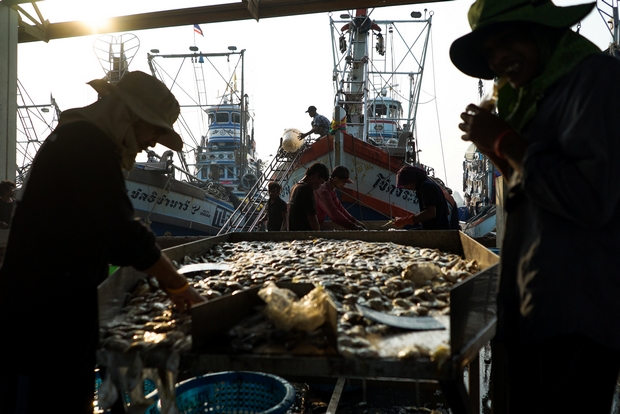
PHNOM PENH: A new online tool helps seafood companies assess the risk of forced labour or human trafficking in their supply chains, its developers say.
The Seafood Slavery Risk Tool provides a database that can be searched by fishery or country. It then assigns a risk rating, which indicates the likelihood of human rights violations.
"The tool is meant to provide an easy starting point for thorough due diligence by those businesses," said Sara McDonald, a senior fisheries scientist with the Seafood Watch programme at the Monterey Bay Aquarium in California, where the system was developed.
She said media reports of slavery in the fishing and seafood processing industries had shown the need for such a tool.
Many of those reports focused on the multibillion-dollar seafood industry in Thailand, which came under scrutiny after investigations showed widespread slavery, trafficking and violence on fishing boats and in onshore processing facilities.
The military government has introduced a series of reforms since the European Union in 2015 threatened to ban fish imports from the country unless it cleaned up the industry.
However, a Human Rights Watch (HRW) report released last month concluded that the country had "not taken the steps necessary to end forced labour and other serious abuses on fishing boats".
The Foreign Ministry, however, has defended the government’s efforts in tackling human trafficking, saying that the HRW report contained many outdated references.
The report touched on how migrant fishermen from neighbouring countries are often trafficked into fishing work, prevented from changing employers, not paid on time, and paid below the minimum wage.
“Most of the information mentioned in the report relates to the situation in 2016, with some dating back to 2012, which does not reflect the reality,” Foreign Ministry spokeswoman Busadee Santipitaks said in late January.
In any case, exploitation persists in other fisheries worldwide, and the new online tool is intended to help people identify where problems lie.
After abuses at sea became public knowledge, Ms McDonald said that "business partners" of the Seafood Watch programme -- which helps determine if seafood has been produced in an environmentally responsible way -- began asking for more information.
"It became evident that publicly available resources to help identify the risks in supply chains weren't available," she said.
To fill that gap, her group partnered with the Hong Kong-based anti-slavery charity Liberty Asia, the Honolulu-based Sustainable Fisheries Partnership, a non-profit group that helps to rebuild depleted fish stocks, and Seafish, a public body founded to improve standards in Britain's fisheries.
Over two years, they developed the Seafood Slavery Risk Tool, with help from agencies including the United Nations International Labour Organization, Greenpeace and the US State Department.
The tool went live on Feb 1. It is searchable by country and seafood type but information on many categories is still being entered and updated.
In addition to providing information, Ms McDonald said the website should encourage companies to ask questions of their suppliers, which could encourage them to stop abuses.
"We hope the tool will lead to long-term changes to practices in the industry so that seafood that is free of forced labour, human trafficking, and hazardous child labour becomes the norm," she said.